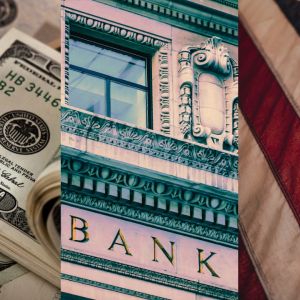Economists, investors, and banking executives are blaming US financial regulators for allegedly “choking” economic productivity through excessive oversight. According to Canadian-American venture capitalist Chamath Palihapitiya, regulations have reduced the “competitiveness of smaller institutions” and pushed them to the brink. Through a Monday X post, Palihapitiya accused regulators of making the US a hostile environment for innovation and growth. “ The number of public companies in the US peaked around 8,000 and has since shrunk to approximately 6,000. Meanwhile, the amount of regulation and regulatory agencies have exploded ,” he wrote . He also noted the collapse in the number of banks, which once stood at 28,000, now down to just 4,500, and added that increasing oversight favors large, consolidated institutions over entrepreneurs and small businesses. “ We need a regulatory reset, ” the Social Capital founder concluded. FDIC report shows decline in US bank numbers In an April report, Federal Deposit Insurance Corporation ( FDIC ) Acting Chairman Travis Hill talked about the contraction in the US banking sector. Since 2008, the number of bank charters has declined from roughly 8,500 to 4,500. Yet, Hill reiterated that mergers are not the cause for the dwindling figures. “ Statistically, the decline in banks since the start of the Great Financial Crisis is less a product of increased merger activity and much more a product of the steep decline in new bank formation ,” he explained. According to Hill’s report, the average rate of intercompany mergers since 1980 is between 1% and 4% annually, with a long-term average of 2.5%. The decline has moderated in recent years, with charter closings averaging 3.4% per year since 2018, compared to 4.2% over the longer horizon. Regulatory burden leaves entrepreneurs conflicted Several entrepreneurs share the sentiment that regulations have spiraled out of control. Arthur Macwaters, co-founder of mental health startup Legion Health, shared a chart from the Regulatory Studies Center at George Washington University, showing a continual rise in the total number of pages published in the Code of Federal Regulations since the 1950s. Regulations keep climbing, and have reached an all-time high. Fundamentally, there's no incentive for politicians to delete regulations, so they just keep piling up. This not only destroys productivity, but in a fundamental and sinister way changes the way people think about… pic.twitter.com/td3MrF04hb — Arthur (@ArthurMacwaters) May 18, 2025 Starting at under 20,000 pages, the volume of federal regulations grew particularly during the 1970s under Presidents Nixon and Carter, crossing 100,000 pages by the early 1980s. It saw a brief leveling off during Ronald Reagan’s presidency in the mid-1980s, against the backdrop of his administration’s deregulation agenda, but the overall trend resumed upward shortly after. Other dips in the regulatory code’s page count occurred in the early 2000s under President George W. Bush, whose tenure had a little taste of “regulatory restraint.” The period was followed by an expansion during the post-2008 Barack Obama’s administration, when new rules tied to the Affordable Care Act and Dodd-Frank Act were implemented. By 2022, the Code surpassed 180,000 pages. Capital requirement cuts could help reduce regulators ‘weight’ Last week, reports emerged that US authorities could relax bank capital rules that have been present for more than a decade. According to a Cryptopolitan report published Thursday, regulators are poised to announce a cut to the supplementary leverage ratio (SLR), a post-2008 regulation that requires banks to hold high-quality capital against risky assets such as loans and derivatives. Sources familiar with the matter claimed the changes are expected this summer. The effort follows sustained lobbying from major banks, including JPMorgan Chase and Goldman Sachs, which argue that strict capital requirements have restricted their ability to lend and compete effectively. The SLR was introduced after the 2008 global recession , designed to make sure banks could withstand financial shocks without requiring taxpayer-funded bailouts, like those seen during the crisis. Cryptopolitan Academy: Tired of market swings? Learn how DeFi can help you build steady passive income. Register Now



















